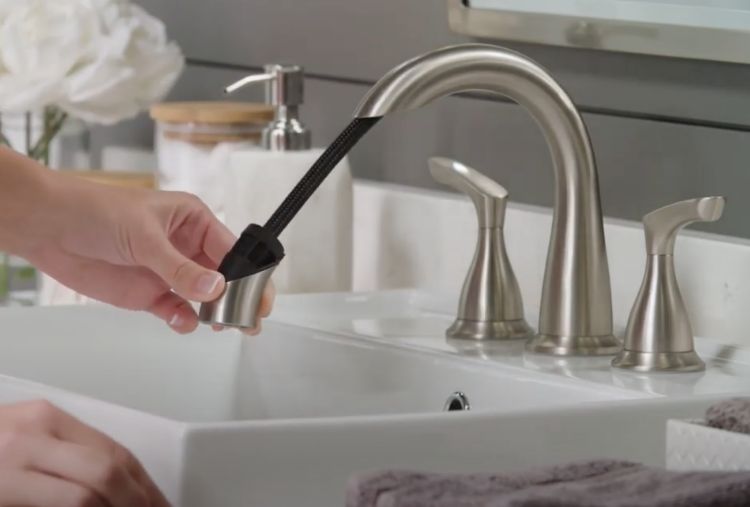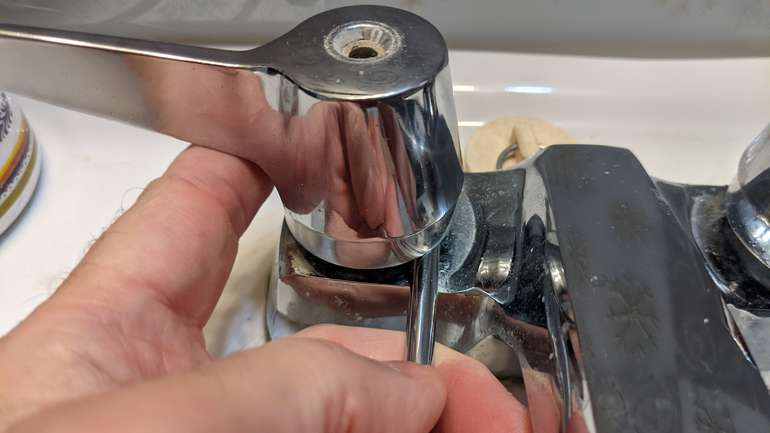Which It's Essential to Correct a Faulty Faucet
Which It's Essential to Correct a Faulty Faucet
Blog Article
They are making a number of good pointers about Why Are My Faucets Dripping (And Can I Fix It Myself)? as a whole in this article followed below.

Trickling faucets may look like a small hassle, but their impact goes beyond just the aggravation of the noise. From wasting water to incurring unnecessary financial costs and health and wellness dangers, ignoring a trickling faucet can result in numerous repercussions. In this short article, we'll look into why it's vital to address this usual home concern immediately and effectively.
Wastefulness of Water
Ecological Impact
Leaking taps contribute dramatically to water wastage. According to the Epa (EPA), a solitary faucet leaking at one drip per secondly can squander greater than 3,000 gallons of water each year. This not only stress water resources yet also affects environments and wild animals depending on them.
Financial Expenses
Boosted Water Bills
Past the ecological impact, trickling faucets can pump up water expenses considerably. The gathered wastefulness over time equates right into higher utility expenses, which can have been stayed clear of with timely repairs.
Possible Home Damage
Moreover, long term trickling can cause damage to components and surfaces surrounding the tap. Water accumulation can cause discoloration, corrosion, and also structural concerns if left ignored, leading to additional repair service costs.
Health and wellness Concerns
Mold and Mold Growth
The continuous presence of wetness from a leaking faucet produces an optimal atmosphere for mold and mildew development. These fungi not just endanger interior air top quality however likewise pose health threats, especially for individuals with respiratory problems or allergic reactions.
Waterborne Illness
Stagnant water in trickling taps can end up being a breeding ground for microorganisms and various other microorganisms, enhancing the threat of waterborne illness. Impurities such as Legionella germs thrive in stationary water, potentially bring about major illnesses when ingested or breathed in.
Do it yourself vs. Professional Repair service
Advantages and disadvantages of DIY Fixing
While some may attempt to take care of a trickling faucet themselves, DIY fixings come with their own set of difficulties. Without correct expertise and tools, DIY attempts can intensify the problem or cause insufficient fixings, prolonging the problem.
Benefits of Hiring a Professional Plumber
Hiring a professional plumber guarantees that the underlying reason for the dripping faucet is addressed properly. Plumbing professionals have the know-how and tools to detect and fix faucet issues successfully, conserving time and reducing the risk of more damage.
Step-by-Step Guide to Dealing With a Dripping Faucet
Devices Needed
Before trying to repair a dripping tap, gather the essential tools, consisting of an adjustable wrench, screwdrivers, substitute parts (such as washing machines or cartridges), and plumber's tape.
Common Faucet Issues and Their Solutions
Recognize the type of tap and the specific issue causing the drip. Usual issues include damaged washers, rusty valve seats, or defective O-rings. Describe producer directions or on the internet tutorials for step-by-step guidance on repair work.
Preventive Measures
Routine Upkeep Tips
To avoid trickling faucets, perform regular maintenance such as cleaning up aerators, evaluating for leakages, and changing damaged components quickly. Additionally, take into consideration installing water-saving tools or upgrading to much more reliable fixtures.
Significance of Prompt Services
Resolving dripping faucets as quickly as they're discovered stops more water wastage and possible damages, inevitably conserving both water and money in the future.
Effect On Home Worth
Understanding of Well-Maintained Building
Keeping a building in good condition, consisting of dealing with upkeep issues like leaking taps, enhances its viewed worth and value amongst possible customers or tenants.
Influence on Resale Value
Properties with well-kept plumbing components, consisting of taps, command greater resale worths in the property market. Resolving trickling faucets can add to a favorable impression throughout residential or commercial property examinations and negotiations.
Ecological Duty
Individual Payment to Preservation
Taking responsibility for taking care of trickling taps aligns with wider efforts toward water conservation and environmental sustainability. Every person's activities jointly make a significant impact on protecting valuable resources.
Lasting Living Practices
By focusing on punctual fixings and adopting water-saving behaviors, individuals contribute to lasting living methods that profit both existing and future generations.
Final thought
Resolving a trickling tap goes beyond simple comfort; it's an important step towards preserving water, decreasing monetary prices, and safeguarding health and wellness and building. Whether through DIY repair work or expert support, acting to take care of dripping faucets is a small yet impactful way to promote responsible stewardship of resources and contribute to a much healthier, extra lasting future.
Why Are My Faucets Dripping (And Can I Fix it Myself)?
Causes of a Dripping or Leaking Faucet
Whether you’re hearing drops of water falling and hitting a sink, or noticing water ooze out from the base of the spout, you shouldn’t ignore a dripping or leaking faucet. And, the good news is, sometimes you can fix the problem yourself.
In this article, we’ll review a few common causes of dripping and leaky. We’ll also walk you through some basic ways to find the problem and handle it without calling anyone — and let you know when to call in a pro.
But, no matter what the cause, or whether you can handle it on your own, the sooner you address it, the better.
Each drip may be a tiny amount of water. But, they all add up quickly. According to the U.S. Geological Survey, one faucet losing one drop every 20 seconds — five a minute — wastes around a liter of water every day, and 173 gallons a year.
Add in more than one in your house, and it’s a lot of water to waste. So, we’ll help you get to the bottom of things quickly.
Four Reasons Your Faucet May Be Dripping
Aerator is Damaged or Unseated Valve Seat is Corroded O Ring is Loose or Worn Out Part of the Assembly is Loose Aerator is Damaged or Unseated
If you unscrew the end of your faucet, you’ll find the aerator. It’s the little stem piece with a screen on it that shuts off the water circulation.
If it’s damaged, or if it’s not sitting right, it will allow water to pass through.
Valve Seat is Corroded
Next is the valve seat, which is connected to the washer. If the washer wasn’t in place correctly, then it could have ground against the seat. Over time, this damages the valve seat.
The problem could also be corrosion: Over time, the part has worn out, and it’s now allowing water to pass through.
O Ring is Loose or Worn Out
Since the o ring is only a small rubber gasket, it’s a common reason why the faucet is dripping. You’ll find it at the base of the faucet, and it’s there to keep water from coming out where it’s not supposed to.
However, it’s common for the o ring to wear out over time. When it does, you’ll notice a drip.
Part of the Assembly is Loose
So far, we’ve looked at a few small, specific parts. But, the problem could be anywhere in the assembly if something’s out of place.
Even if a part isn’t damaged, over time, it may have become loose or dislodged. It could be the parts we mentioned, or the aerator at the tip of the faucet, the stem itself,
Can I Fix a Leaky Faucet Myself?
Depending on the problem, and how handy you are, there’s a chance you can fix a leaky faucet without calling a professional. But, you do run the risk of making the problem worse.
If it’s a small drip, you can certainly try a few troubleshooting tactics. We’ll walk you through them in a moment.
But, no matter what, your first step should be shutting off the water coming into the faucet. You should find a shutoff valve under the sink on the pipes leading to it. Turn each one clockwise until they close tightly.
Next, make sure you have the right tools for whatever you’re attempting. It’s tempting to make do with what you have. But, you need the right ones for a reason: You’re often dealing with small parts that can break if you handle them carelessly.
If you’re feeling confident, here are some places to start.
Items Near the Tip of the Faucet
A few of the parts we mentioned — particularly the valve seat and washer — are located at the tip of the faucet where the water comes out. They’re easy to access, making it a good place to start.
Check the O Ring
To check the o ring, you’ll need to take off the spout at the base. It’s easiest on kitchen sinks with long spouts, versus the smaller, bulkier base on most bathroom sinks.
Either way, this can be tricky, so do it carefully and don’t force anything. If it’s not coming right off, you’re much better off calling in a pro than possibly breaking something.
For a kitchen sink, there’s usually a nut or coupling assembly at the base of the spout. These often slide off easily without using any tools.
Once you’ve disassembled those parts, gently but forcefully twist off the spout.
Then, you can see the o rings. There should be two of the rubber gaskets on the base. If they look worn or damaged, replace them, and see if that solves the problem.

As a person who reads on 4 Common Reasons for a Leaky Faucet, I think sharing that piece of content was a good idea. If you liked our post kindly be sure to pass it around. We cherish your readership.
Report this page